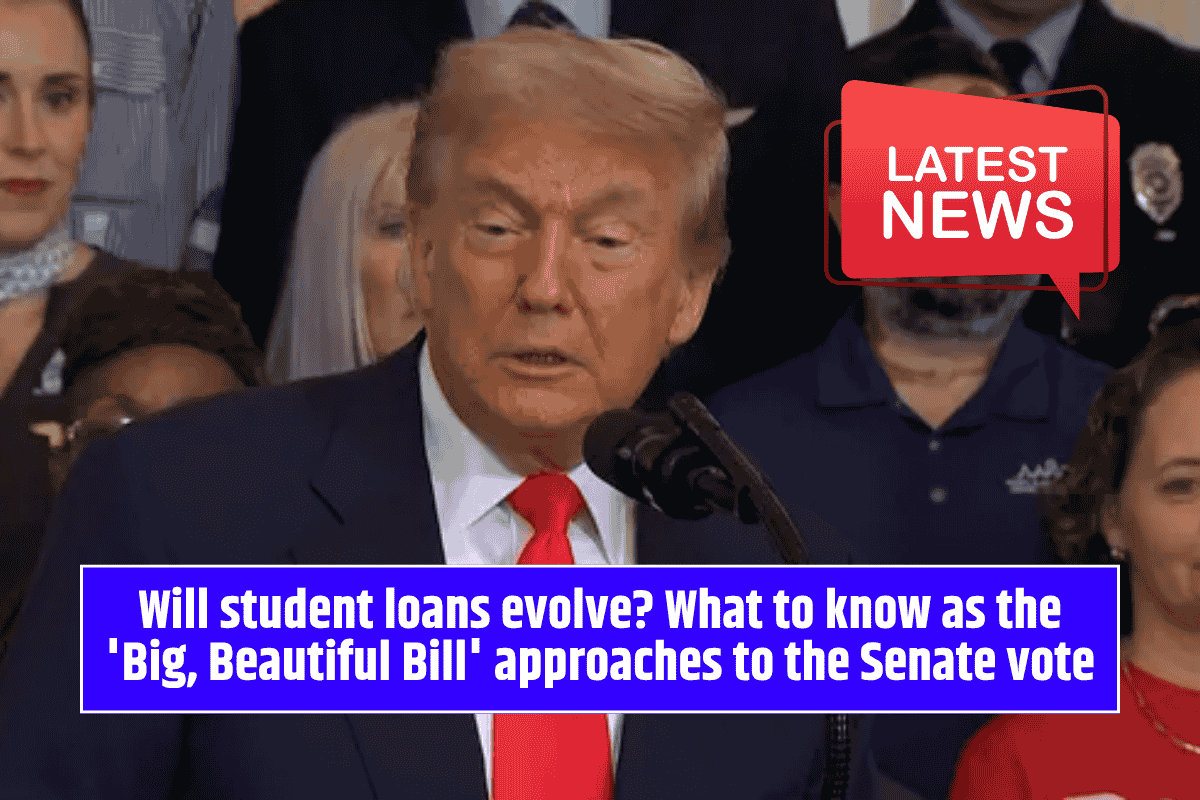The U.S. Congress is closer than ever to making significant changes to college financial aid. On June 10, GOP lawmakers in the Senate unveiled their version of the higher education section of President Trump’s tax and spending megabill, known as the “One Big Beautiful Bill Act.”
This new proposal, which is set to drastically reform student loan borrowing and repayment plans, is moving swiftly through the legislative process.
While the final vote on the bill has not yet occurred, it is expected to take place soon, possibly late Monday, as Republicans work to meet their self-imposed deadline of July 4.
The bill had already passed the House of Representatives in May with a narrow 215-214 vote, and now, the Senate’s version adds further changes to the mix.
Key Changes in the Senate’s Version of the Bill
The Senate’s version of the bill is somewhat less aggressive than the proposal introduced by Republicans in the U.S. House of Representatives back in April.
According to USA TODAY, one significant difference is that the Senate bill does not include a provision to eliminate subsidized federal loans for undergraduates, which are loans where the government covers the interest while students are in school and during a short grace period after graduation.
However, both chambers of Congress agree on one major change: drastically reducing the number of student loan repayment plans. Under the Senate proposal, there would be only two options available for borrowers who take out loans after July 1, 2026.
The Two Proposed Repayment Plans
- Standard Repayment Plan
This plan would replace the current system of multiple income-driven repayment options. Instead, it would provide fixed repayment terms based on the total loan amount:- 10 years for loans of $25,000 or less
- 15 years for loans between $25,001 and $50,000
- 20 years for loans between $50,001 and $100,000
- 25 years for loans over $100,000
- Repayment Assistance Plan
This income-driven option would tie monthly payments to a borrower’s adjusted gross income (AGI). Borrowers with lower earnings would pay less, and depending on their income and loan amount, any remaining balance could be forgiven after a set number of years.
These proposed changes would end former President Joe Biden’s Saving on a Valuable Education (SAVE) program, which had been widely praised as the “most affordable repayment plan ever” by former Education Secretary Miguel Cardona.
The SAVE program had faced legal challenges and was stalled in court, leaving millions of borrowers in forbearance.
Impact on Existing Borrowers
For loans disbursed on or after July 1, 2014, borrowers would pay 10% of their discretionary income, with any remaining balance forgiven after 20 years.
Discretionary income is defined as the amount left over after covering essential living expenses, as calculated by a government formula.
Specifically, it refers to the portion of income that exceeds 150% of the federal poverty line, which varies depending on household size and location.
Changes to Deferment and Forbearance
Under the Senate bill, there would be significant changes to the existing deferment and forbearance options. Economic hardship and unemployment deferments would be removed.
Instead, borrowers facing financial difficulties would be directed toward either the Repayment Assistance Plan or Income-Based Repayment. Discretionary forbearance would still be available but capped at nine months for every 24-month period.
What’s Next for the Bill?
The Senate is expected to vote on the bill on Monday, after which it will return to the House of Representatives for a final vote. If the House approves it, the bill will head to President Trump’s desk for signing.
The deadline for passing the “One Big Beautiful Bill Act” is July 4, marking a major step in reforming the college financial aid system.






